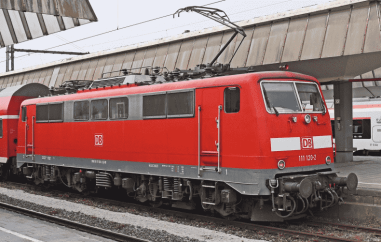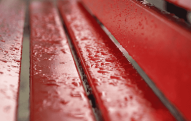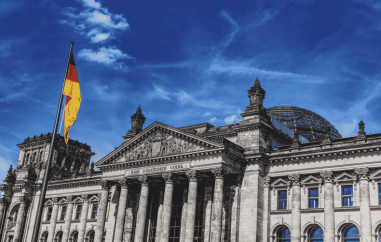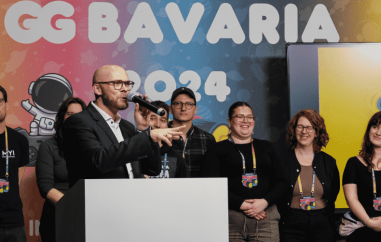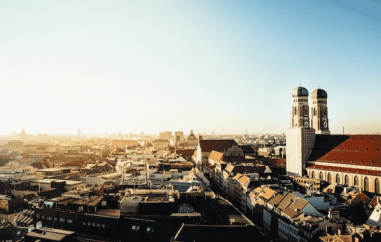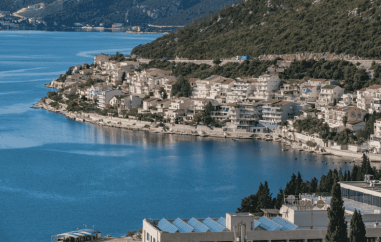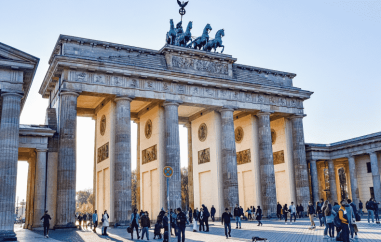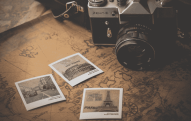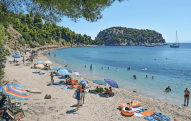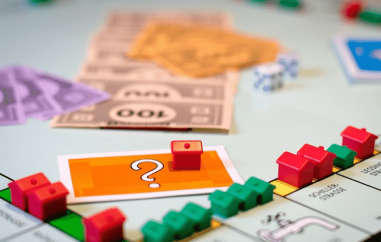Where Art meets History: 75 years of the Haus der Kunst
Munich's Haus der Kunst has the rare distinction of having been on display in art exhibitions as well as hosting them. Albert Speer, while not the architect of the original building, created a scale model for the German pavilion in the Paris World Fair in 1937 as an example to the world of Nazi aesthetic ideals of a culturally purified Reich. Anyone who visited the exhibition could have been left in little doubt about the relationship between art and contemporary events. Close by was the Spanish pavilion, exhibited by the dying republic even as Franco's forces dug their fingernails into the country's throat, and its centrepiece was a dramatic, difficult and unsettling masterpiece of Modernist painting that embodied every "degenerate" quality that the Haus der Kunst was designed to cleanse from German art. This was Guernica, by Pablo Picasso, a cry of pain and outraged humanity in protest at the aerial slaughter visited upon the small Basque town by the Luftwaffe earlier that year - an event which alerted many to the fact that the miseries of the Spanish civil war were but a prelude to a greater European tragedy to come - and allowed the Germans some target practice. For a brief moment in time, Picasso and Speer and their incompatible worlds shared an uneasy space, while outside the storm clouds gathered.
A scale model of the Haus der Kunst is once more on display today - this time inside the building itself, and this time made of white chocolate. Times have changed. The message appears to be that totalitarian architecture may be seductive at first but probably won't last a thousand years. The model forms part of a compelling exhibition in which the Haus der Kunst is currently marking the 75th anniversary of its opening by Adolf Hitler in 1937 (shortly after which the Munich public dubbed it the Weisswursttempel). Histories in Conflict, which runs until January next year, assesses the building's history in the key years 1937-1955. During this period the Haus der Kunst moved from showpiece of Nazi cultural dogma to US military headquarters in post war Munich, and finally was reopened to the public as a rehabilitated platform for the very German and international modern art the destruction of which it had originally been intended to symbolise.
The most fascinating room in the exhibition brings together examples of the vilified Modernist art that Nazis so despised - and which they drove from public cultural life - with examples of officially approved "German art" that signalled the worldview of the regime. The Haus der Kunst opened with a grand exhibition of properly "German" and patriotic art - paintings of flaxen haired maidens, statues of muscular male warriors, that sort of thing - and one day later, the Entartete Kunst exhibition of "degenerate" art opened nearby in the Hofgarten. The Munich public was encouraged to visit both so that people could contrast the "healthy" art in the Haus der Kunst with the "diseased" art on display in the Hofgarten.
The "degenerate" exhibition was intended to educate the public on the horrors of a fallen world of expressionist, cubist, abstract and other decadent "Jewish" manifestations of a sick modern culture to which the Third Reich was the cure. Cluttered and crowded together in an exhibition space designed to convey the maximum contempt - the walls were covered with insulting graffiti - were works by a checklist of the defining figures of modern German and European art: Picasso, Klee, Beckman, Kandinsky et al. One visitor echoed the prophetic words of Heinrich Heine of the 19th century ("where they have burned books, they will in the end burn people") with the observation that it looked like a concentration camp for art.
Today's exhibition brings works from the two 1937 exhibitions together. Amusingly, the sculptor Rudolf Belling managed to be represented in both at the same time. Also included are works from Hitler's personal collection, so visitors will get an insight into the Führer's tastes - a little more elevated than Saddam Hussein's, it turns out, but not too exciting either. Paintings of sturdy peasants and U-boots at sea appeared to do the trick for the most part. One uncomfortable moment awaits when you discover that among his personal collection was a painting of concentration camp inmates breaking rock at the quarry at Flossenbürg - a source of much of the marble that adorned the very monumental public buildings of which the Haus der Kunst was an example.
A highlight is the pioneering modernist sculpture, Kneeling Woman by Wilhelm Lehmbruck, which the Nazis defamed as an example of degenerate art in 1937 and which was later displayed outside of Germany during the war as a symbol of the "free art of Europe". Today it is positioned directly in front of the Nazi-approved painting, Adolf Ziegler's Four Elements. The golden Aryan women of the latter stare impassively out at the angular, inscrutable female of the former. It's a nice touch.
The exhibition concludes with a survey of the building's post war history, when it passed from being an officer's club for the US army (who, as well as turning the temple of Nazism into a Jazz club, discovered that its timeless marble halls made for a very good basketball court) to re-opening its doors as one of the major art exhibition centres in Munich - albeit with very different art to that which it had originally been intended to host. Within a few short years after the war's end, the very art the Nazis hoped to eradicate began to appear in the building they had fashioned as a statement of their cultural triumph.
One video display shows footage of an exhibition from the late 1940s. Look closely at the black and white images, and there you'll see it, spread prominently across one entire wall before the gaze of a curious Munich public: Guernica. A circle had been closed and Picasso's great work held a place of honour in the building whose presence in the Paris World Fair it had mocked with its own. In the intervening years, a confused Gestapo officer had confronted Picasso in his studio in occupied Paris and, pointing at the tribute to the murdered innocents of Spain, asked him, "Did you do that?"
"No", replied the artist. "You did".
Histories in Conflict.
10th June 2012 - 13th January 2013
Haus der Kunst
Prinzregentenstrasse 1

